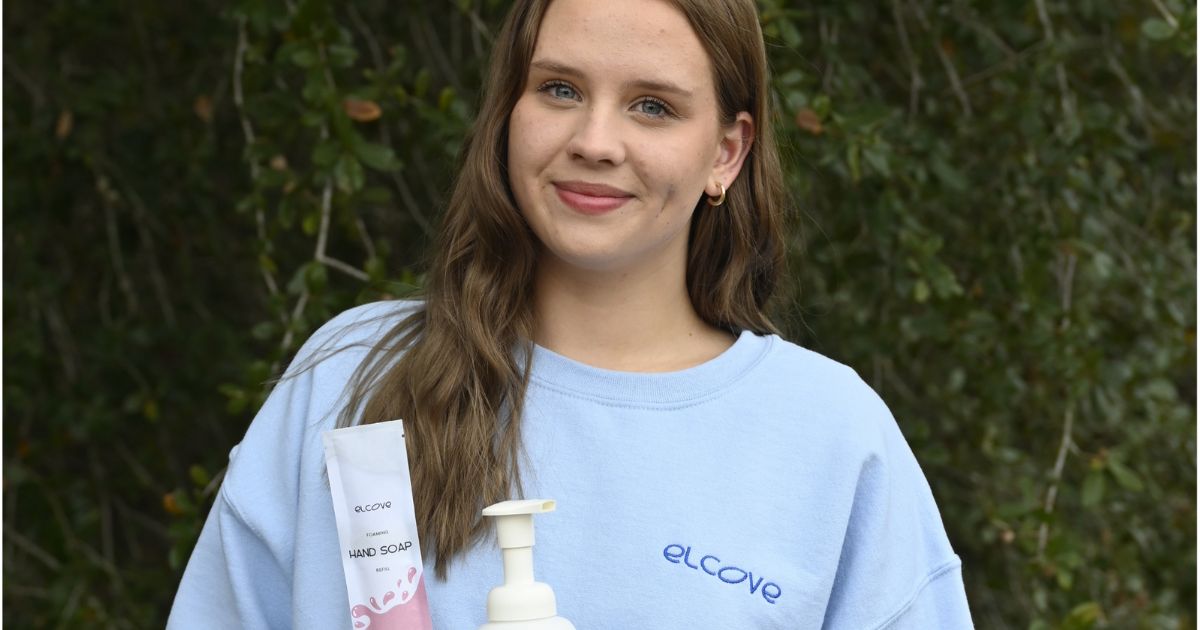How to Crowdfund a Business in Five Steps

Anastacia Yefimenko ’25 liked the idea of crowdfunding for her venture. It seemed to be a simpler, low-stakes way to raise funds, rather than trying to chase down bigger-pocketed investors. “There is a lot of trouble going through that,” said Yefimenko, the co-founder and CEO of Elcove, a provider of sustainable cleaning products.
Not that crowdfunding is easy. Yefimenko took a Babson College class devoted solely to the subject. The comprehensive course, taught by Associate Professor of Entrepreneurship Erik Noyes, took students through the many steps of launching a successful crowdfunding campaign. “It is a lengthy process,” Yefimenko says. “I don’t think I realized how long it would take.”
Yefimenko used what she learned to launch a crowdfunding campaign for Elcove on the platform Indiegogo. She shared the strategies she followed.
Launching a crowdfunding campaign takes work, engagement, and follow-through. Participants need to keep five key steps in mind: figuring out a goal, building excitement, doing research, creating a strong video, and delivering on promised perks.
1. Figure Out the Right Goal
Ventures must figure out what they want to accomplish with their crowdfunding campaigns. Typical successful campaigns look to raise $8,000 to $10,000, Yefimenko says, but for Elcove, she decided to go for a lower goal of $5,000. She plans to use the money for ingredients and new sustainable packaging for the venture’s next production run.

Because Elcove is cost-effective in its production, Yefimenko didn’t think a larger goal was warranted. “We produce everything ourselves, so $5,000 will go a long way,” she says. “It is important you set a goal that is reasonable.”
Raising money also isn’t the most important objective. Instead, Elcove is hoping to raise awareness and find long-term customers. The venture uses a refill model with its toxic-free dish and hand soap. For the campaign, its starter kits, which include reusable glass bottles and compostable pouches of soap that are mixed with water, will be offered at a discount.
“Our goal is finding people who purchase the starter sets and then come back,” Yefimenko says. “They become lifelong customers. It is more of a long-term benefit we’re hoping to get out of this.”
2. Build Excitement
Building the type of brand awareness that Elcove is seeking takes more than simply setting up a page on Indiegogo or Kickstarter.
To create buzz, Yefimenko emailed her existing customers about the impending crowdfunding campaign. Her regular posts on LinkedIn also often include updates about Elcove, which was a finalist in Babson’s prestigious B.E.T.A. Challenge in 2023. Yefimenko considers her campaign communication so important that she works with Build You Marketing, an agency founded by Jake Ross ’24.
“You just don’t want to launch it. You want to build excitement,” Yefimenko says. “It is really about building a community around yourself and your campaign.”
3. Do Your Research
To research ideas for a campaign, Yefimenko suggests perusing crowdfunding sites and checking out the many ventures and ideas seeking funding, particularly those in your industry. See what they are doing right, and what they’re doing wrong. Plus, make sure to read the comments from customers.
“A lot of campaigns aren’t successful,” says Yefimenko, who at Babson is a Weissman Scholar, a Natalie Taylor Scholar, and a past vice president of eTower. “Get as much knowledge as you can.”
If a particular crowdfunding campaign intrigues you, donate a little money to it, she says. Then you can see how the venture follows up with customers.
“You just don’t want to launch it. You want to build excitement. It is really about building a community around yourself and your campaign.”
Anastacia Yefimenko ’25, the co-founder and CEO of Elcove
4. Create a Great Video
Visit crowdfunding campaigns online, and one thing you’ll notice right away: a video.
That video is critically important. “It’s the main thing people see,” says Yefimenko, who took great care in creating a video for Elcove. She rented an Airbnb where she could film it, and she worked with videographer Kyle Soule ’27 of Soule Media to produce it.
She also made sure the quick, two-minute video started off with action, as she knocks plastic cleaning bottles off a counter. “The goal is to get someone’s attention,” Yefimenko says.
5. Deliver on Promises
When thinking about how to crowdfund a business, the final step is dealing with rewards. A crowdfunding campaign needs to offer enticing rewards to supporters, while ensuring those perks aren’t too difficult to fulfill and deliver. “People will expect to receive them. Be aware that you can execute on whatever you’re promising,” Yefimenko says. “You want to send everything out in a timely manner.”
If a delay does happen, immediately reach out to supporters. “Of course, delays happen, but do your best to communicate that,” Yefimenko says. “Communication is really important.”
That communication doesn’t end once the perks are delivered. Anyone who donated is a potential long-term supporter. “You have to keep engaging,” Yefimenko says.
Posted in Insights




